
Aerial photo of a section of the proposed river conservation corridor, highlighting some of the key components of the proposal: free-flowing river, intact riparian forest, and sustainable, low-impact tourism. Photo credit: Wil Henkel
Here, we present a model river conservation strategy proposed by the Ecuadorian Rivers Institute, designed to protect strategic free-flowing river corridors with intact surrounding forests in the critical transition zone between the Andes mountains and the Amazon lowlands.
The vision is to conserve freshwater resources and their surrounding riparian forests, encourage sustainable economic alternatives, and preserve free-flowing ecological connectivity at the basin scale.
There are few remaining high-quality and ecologically intact Andean-Amazon watershed corridors in Ecuador, making their protection and management an urgent national priority, ideally as part of a larger global tropical river conservation strategy
The proposal targets strategic corridors that have three major characteristics:
- Free-flowing rivers with no dams, diversions, or channel modifications, and no mining or dredging.
h
- High-quality rivers that are a reference for water quality and have exceptional natural and cultural values.
j
- Forested riparian buffer zones to preserve the quality and integrity of the river corridor, enhance the ecological connectivity between protected areas, and preserve habitat throughout critical transition zones.
These core components provide the key elements that are needed to preserve, restore, and enhance the integrity of the freshwater biodiversity, aquatic ecosystems, and scenic landscapes of strategic, free-flowing river corridors in the tropical Andes.
Priorities for River Protection in Ecuador

Base Map. Proposed free-flowing and intact riparian forest corridors (highlighted in yellow) in the northern Ecuadorian Amazon. Data: ERI.
The Base Map illustrates two proposed pilot projects in the northern Ecuadorian Amazon. Both represent key habitats for native fisheries and migratory birds and are important destinations for sustainable ecotourism activities. Following these two examples, national, regional (Amazon-scale), and global river protection programs could be created to include additional watershed corridors.
Jondachi-Hollín-Misahuallí-Napo River Corridor
The Jondachi and Hollín Rivers are major free-flowing tributaries of the Misahuallí River sub-basin in the Napo River watershed. These rivers drain from the Antisana and the Sumaco Napo Galeras National Parks, and provide strategic connectivity in a critical transition zone between montane cloudforests and lowland rainforest.
The proposed corridor would protect 200 km of free-flowing rivers and 19,050 hectares of riparian forest (with the application of 500m-wide buffers) within the Sumaco Biosphere Reserve. A significant portion of the corridor is within a forest reserve to provide enhanced connectivity and protection. The proposed corridor is an established destination for a variety of low-impact ecotourism activities that provide significant benefits to the local economy.
Piatúa River Corridor
The Piatúa River is another world-class paddle sports ecotourism destination that is renowned for its natural bathing areas with crystal clear water and sculpted granite boulders. The Piatúa River is a tributary of the Anzu River sub-basin of the Napo River watershed, which drains out of rugged paramo tundra and montane cloud forests deep within the Llanganates National Park, and provides critical ecosystem connectivity through a wide elevation range with high levels of endemic species.
The proposed corridor would protect 46 km of free-flowing rivers and tributaries and 947 hectares of riparian forest (with the application of a 100m-wide riparian buffer)
River Conservation Strategy
Guidelines for Protection
Legally binding frameworks are needed which restrict the development of intensive land-use activities and hydraulic infrastructure, and guarantee high-level, permanent protection of natural river corridors and natural instream flow regimes, with riparian buffer zones to preserve aquatic habitat and water quality. Ecuador has an existing framework which can be used to designate protected river corridors with the same status as national parks. However, until now it has only been applied to protect small catchment basin areas for sources of drinking water in headwater tributaries.
Management recommendations
Comprehensive management plans must be developed with meaningful public participation, and provisions for monitoring, control and enforcement of restricted activities. Independent monitoring and evaluation is necessary to ensure adequate compliance and implementation is achieved. Academic institutions should be encouraged to participate and develop research programs which reinforce the management objectives.
Social component
The successful implementation of the proposed river protection strategy depends on the active participation and endorsement by the local population and people who use the resource, along with adequate governance, and sufficient funding for management and incentives.
Protecting the river corridor ensures sustainable economic benefits for the inhabitants of the region through low-impact ecotourism activities (such as kayaking, rafting, mountain biking, bird watching, and hiking) which are compatible with the management of the resource.
However, additional financial incentives (such as land grants) are needed to reach other sectors of the population in order to take pressure off of the increasing encroachment into the forested riparian corridors for timber harvesting and subsistence-level agricultural expansion.
Ongoing support and guidance is also needed for local communities and landowners to identify employment opportunities and encourage other sustainable production activities in order to optimize the use of degraded areas outside of the protected riparian buffers.
In the case of plastic recycling, the population of Ecuador has responded favorably to adapting cultural and behavioral norms in response to small incentives created by a tax on plastic beverage containers, to address a significant waste management issue. This is a positive sign for what to expect if incentives are provided for protecting natural river corridors.
Financial mechanisms
Securing long-term financial commitments is a fundamental component to ensure the viability of any natural resource protection program. Most developing countries are burdened by foreign debt and are struggling to meet their fiscal obligations and priorities, which often lessens priorities for environmental management. However, experience has shown that the international community responds favorably to reinforce commitments made by host countries to preserve natural and cultural heritage of global significance, and debt forgiveness and debt reduction transactions for host country governments, from wealthy countries would be expected to provide some funding for the proposed strategy to protect strategic free-flowing river corridors in Ecuador.
The Government of Ecuador is facing a critical economic situation. However, water conservation funds have been successfully implemented to cover the cost of managing the protection of drinking water sources for metropolitan areas by including a small environmental management fee on monthly water bills. Some of these water conservation funds have generated substantial levels of endowment to the point where they could have the potential to provide funding for the protection of strategic river corridors, if that was authorized by the water fund consortium.
While the outcome of COP28 may have put a temporarily damper on the value of the nascent carbon credit market, once the programs are restructured to provide for improved accountability and implementation, the expectations for carbon credits to provide a source of long-term funding for the protection and management of strategic free-flowing river corridors as a climate mitigation strategy are quite encouraging, as are expectations for eventual funding allocations for river protection to be derived from the COP21 Paris Climate Accord, and the Global Environmental Facility (GEF).
Meanwhile, voluntary contributions from hydroelectric projects and extractive projects to offset their impacts by designating a percentage of annual income from the generation of electricity for the protection of free-flowing river corridors.
Likewise, voluntary contributions from international finance institutions based on a percentage of annual revenue disbursed through their investment portfolio could provide meaningful support for the protection of free-flowing river corridors, once these agreements are established.
Annex
Herre is a recent satellite image of the Jondachi-Hollín-Misahuallí-Napo River Corridor. Note the intact river and forest core to the east of the major road network, and north of the Napo River.

Citation
Terry M, Finer M, Ariñez A (2023) Protecting Free-flowing & Intact River Corridors in the Ecuadorian Amazon. MAAP: 202.
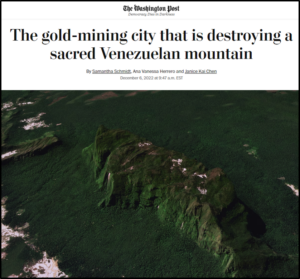 Last year, in collaboration with the organization SOS Orinoco, we published an urgent report about illegal mining on top of a sacred tepui in the heart of Yapacana National Park in Venezuela (MAAP #169).
Last year, in collaboration with the organization SOS Orinoco, we published an urgent report about illegal mining on top of a sacred tepui in the heart of Yapacana National Park in Venezuela (MAAP #169).










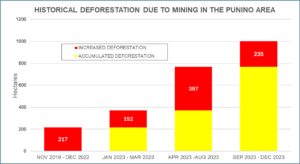



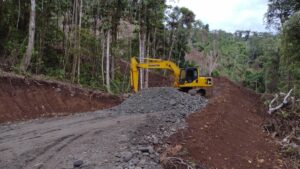 We analyze a new road project that enters the western sector of the Waorani Indigenous Territory, located in the heart of the Ecuadorian Amazon (see Base Map, below).
We analyze a new road project that enters the western sector of the Waorani Indigenous Territory, located in the heart of the Ecuadorian Amazon (see Base Map, below).
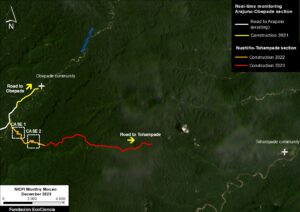





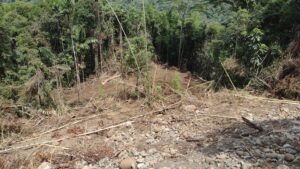
 In the recent
In the recent 
 In a
In a 

























